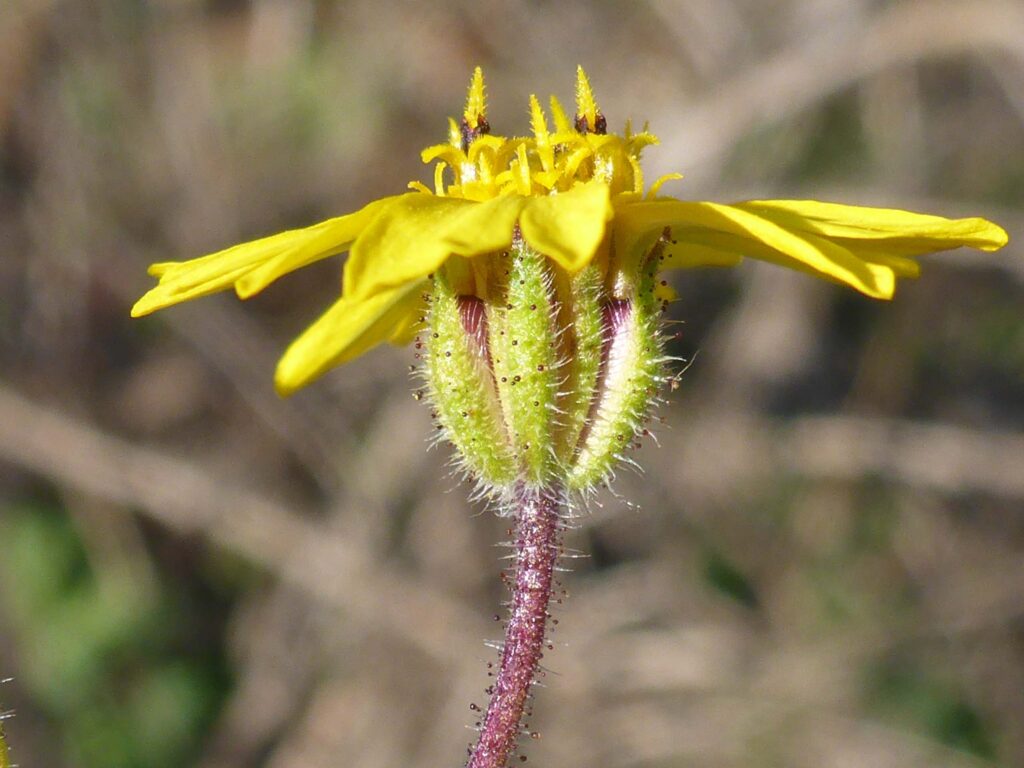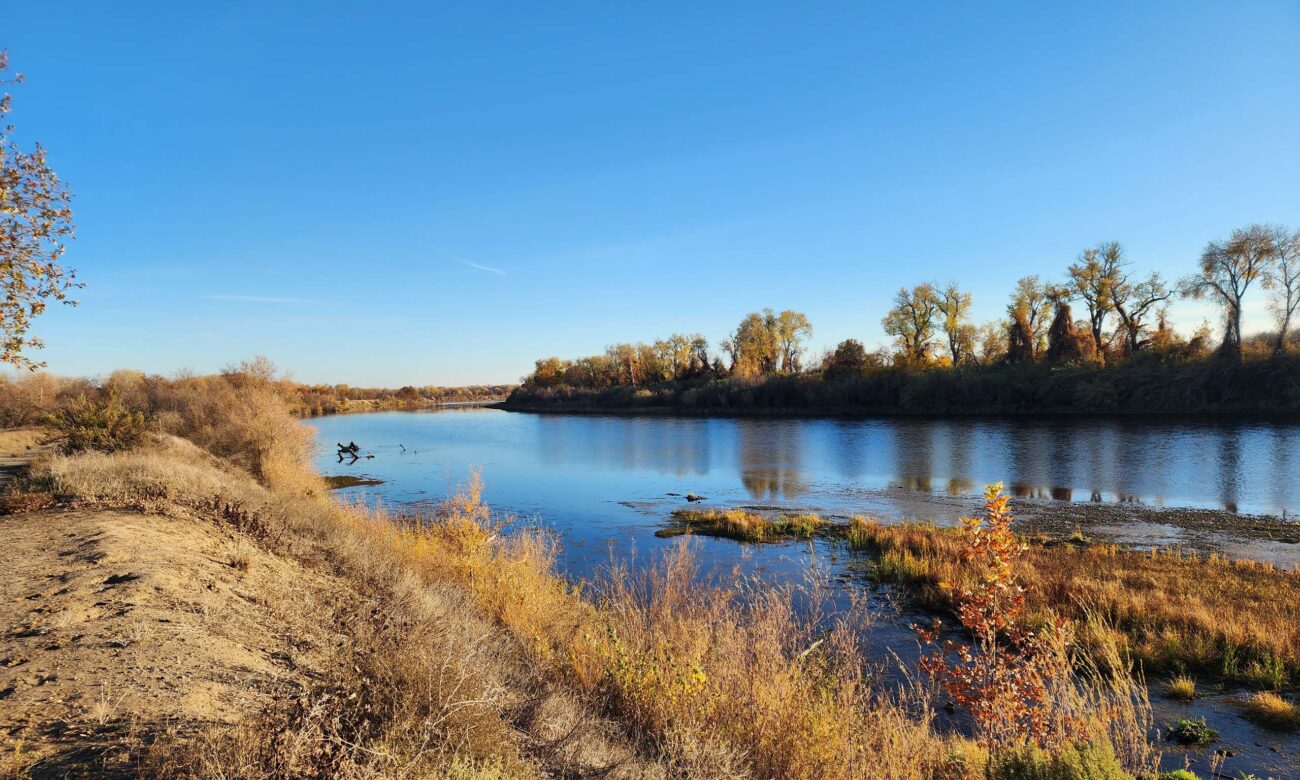
Here’s a lovely fall-colors walk for you: trails in the Rio Vista Unit of the Sacramento River National Wildlife Refuge. We found immense valley oaks, cottonwoods, Oregon ashes, willows, and box-elders vibrant in their fall attire, many draped in vines of the jewel-toned California grape. Stunning! Trails took us through dense vegetation growing under high canopies, along sparsely treed open floodplain, and atop a riverbank levee.
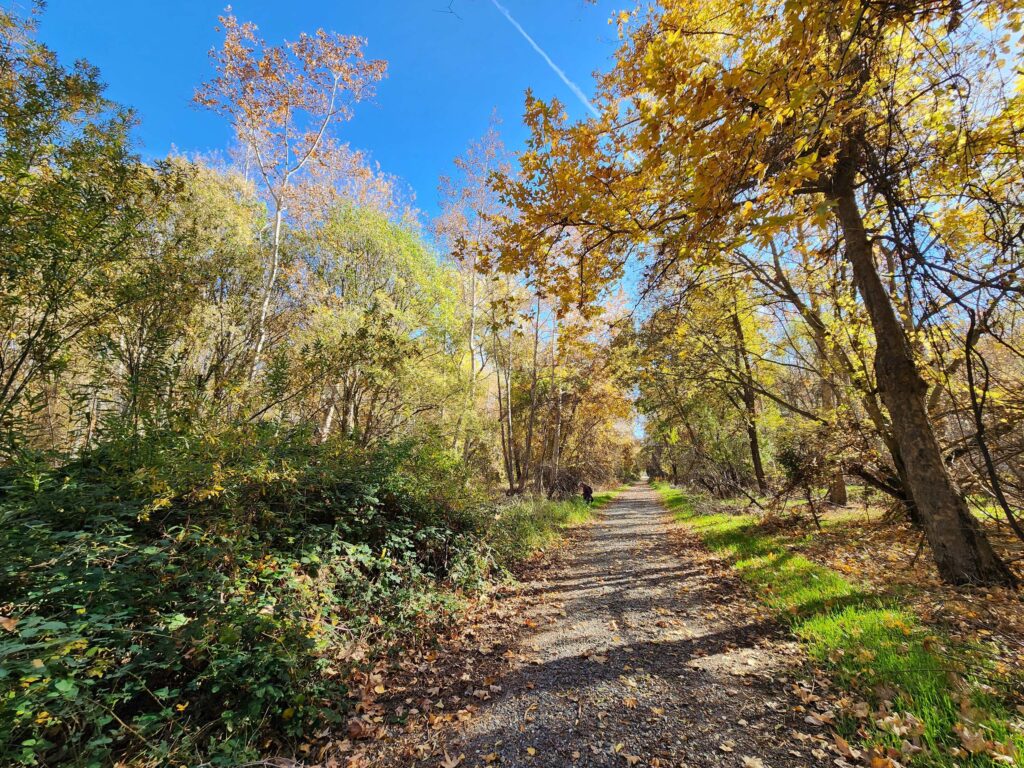
We only recently came to understand the extent of the Sacramento River National Wildlife Refuge, managed by the US Fish & Wildlife Service (USFWS). Consisting of 30 units from Red Bluff to Princeton, they provide over 10,000 acres of conserved land. These units are conveniently lumped into sections according to their location on the river: North, North-Central, South-Central, and South. Not all units are open to the public, and many are only accessible by boat. Seven of the units have hiking trails.
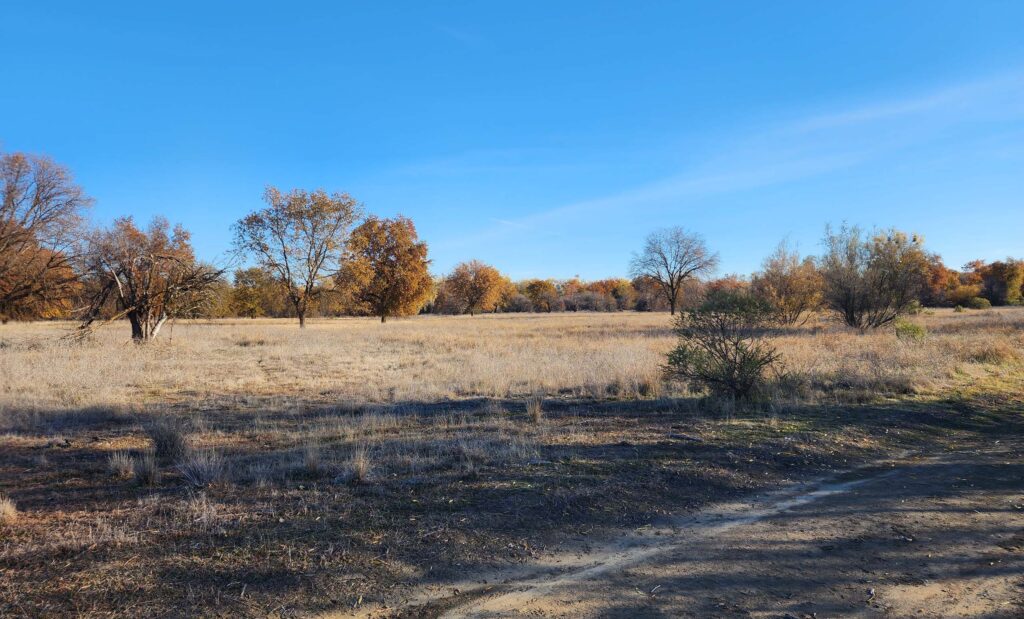
In the North section (closest to Shasta Chapter CNPS territory), the Rio Vista Unit is the only unit that offers hiking. The trailhead is just east of Woodson Bridge, on the south side of South Avenue, outside of Corning. There are over eight miles of trails, primarily through restored riparian habitat, on this ~1,150-acre site in Tehama County.
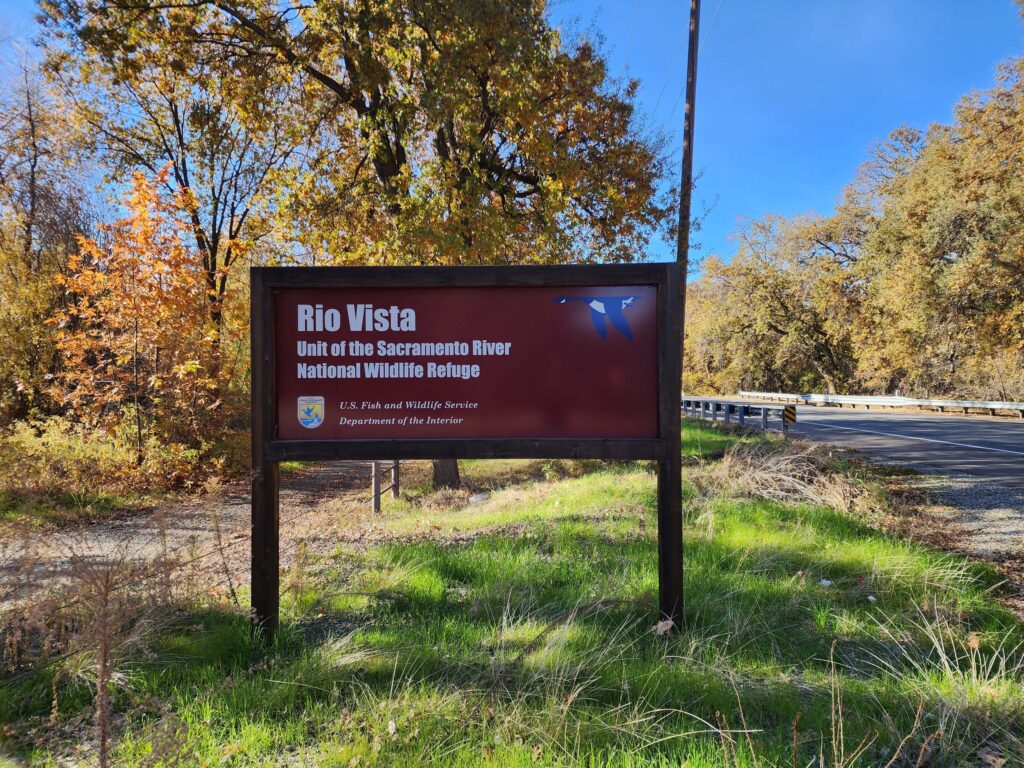
We hiked the main trail, which makes a loop as it generally follows the perimeter of the unit. The trail is almost all flat roadbed and is very well maintained. There are several trails that connect the east and west sides of the main perimeter trail, should you like to make a shorter loop hike.
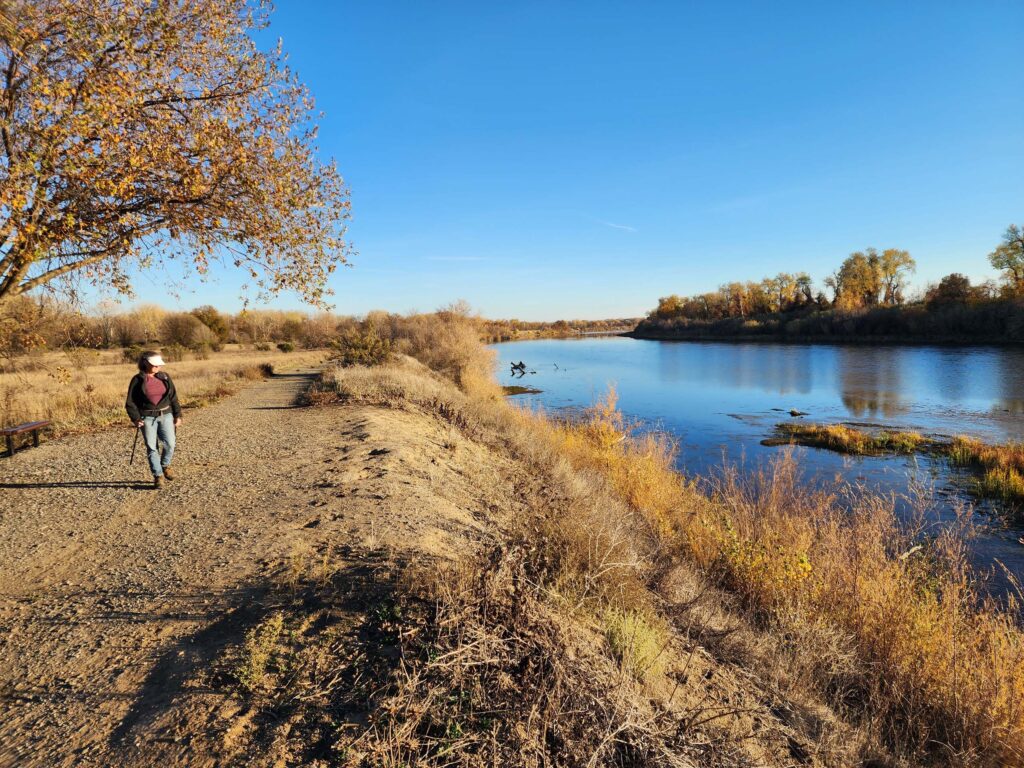
As it was late fall, we did not expect to see a lot in bloom. As this is California, we counted 17 species in bloom, anyway! Admittedly, many were weeds, but weeds are cool, too. Our most exciting find was the diminutive Australian brassbuttons. A weed, yes, but the first time we’d ever seen it, and the first time it has been reported in Tehama County.
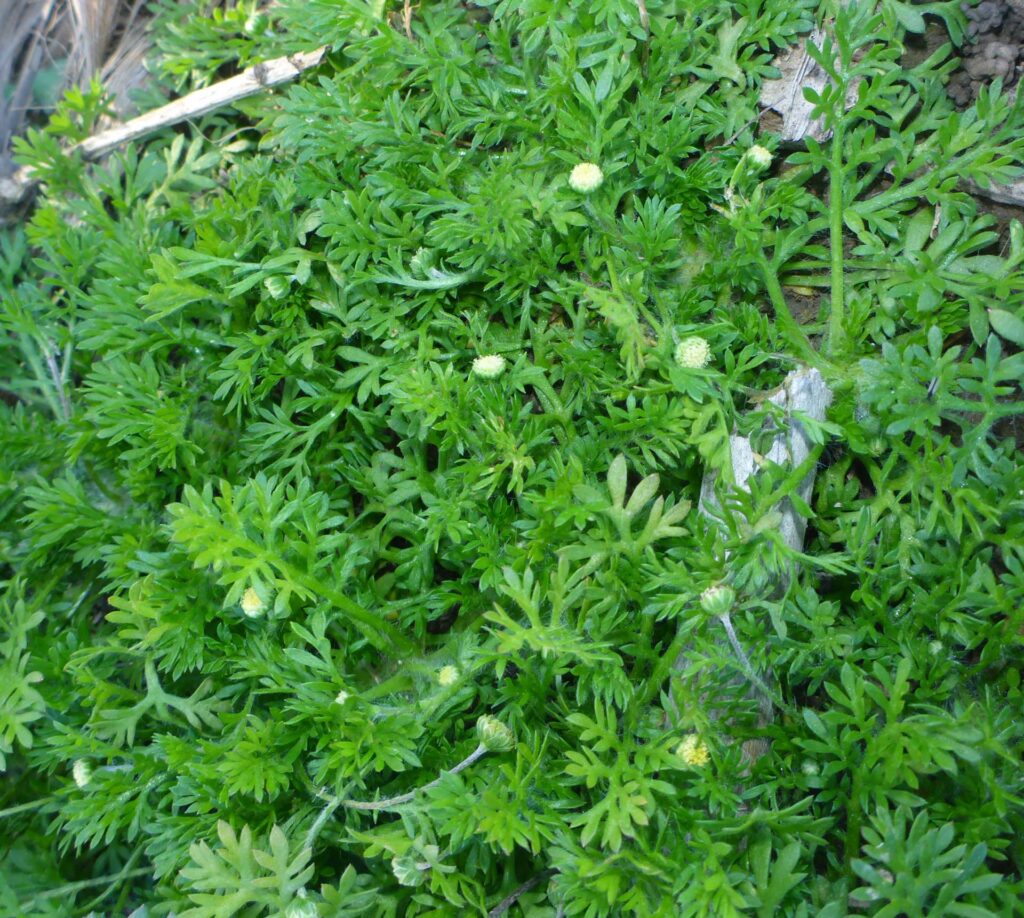
We definitely recommend the Rio Vista Unit trails for a fun fall stroll, customized to fit your energy level and time limit. Besides great botany, this is a marvelous place to go bird-watching. Bring a friend—the four-footed furry types are welcome if kept leashed. However you do it, we know you’ll enjoy it. Meanwhile, we’re going to check out more of these USFWS units! ~Laurie & Don Burk
